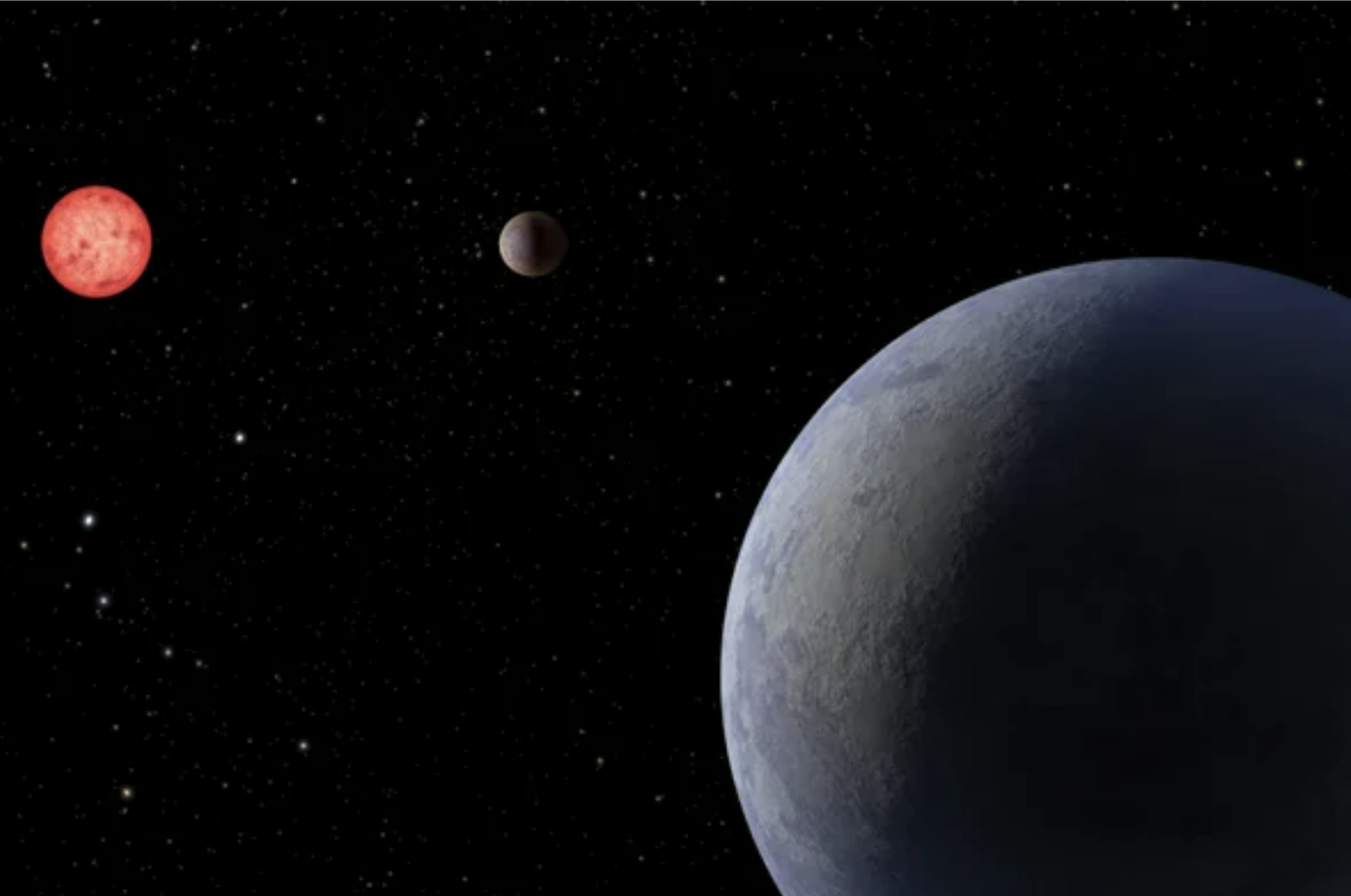 An illustration of a newly discovered “super-Earth,” LP 890-9 c (foreground) and its sister planet, LP 890-9 b, orbiting a red-dwarf star some 98 light-years away from Earth. | Image Credit: NASA/JPL-Caltech
An illustration of a newly discovered “super-Earth,” LP 890-9 c (foreground) and its sister planet, LP 890-9 b, orbiting a red-dwarf star some 98 light-years away from Earth. | Image Credit: NASA/JPL-Caltech
Of the over 5,000 planets detected outside our solar system, most fall into two size categories: “super-Earths” around 1.4 times Earth’s width, and “mini-Neptunes” around 2.4 times Earth’s width, with few exoplanets falling outside these categories. The origins of this “radius gap” are debated, but a new model–co-authored by EPSS Professor Hilke Schlichting–suggests the answer lies in planetary collisions.
Using computer simulations, Schlichting and her team found that a migration model–where young planets migrate inwards towards their stars and collide as their planetary systems age–could explain the strange exoplanet radius gap. The migration model results also suggest a correlation between planet sizes and their compositions (rocky vs. water-ice).
To read more about the model and its results, see: https://www.scientificamerican.com/article/cataclysmic-collisions-may-explain-forbidden-exoplanets/
